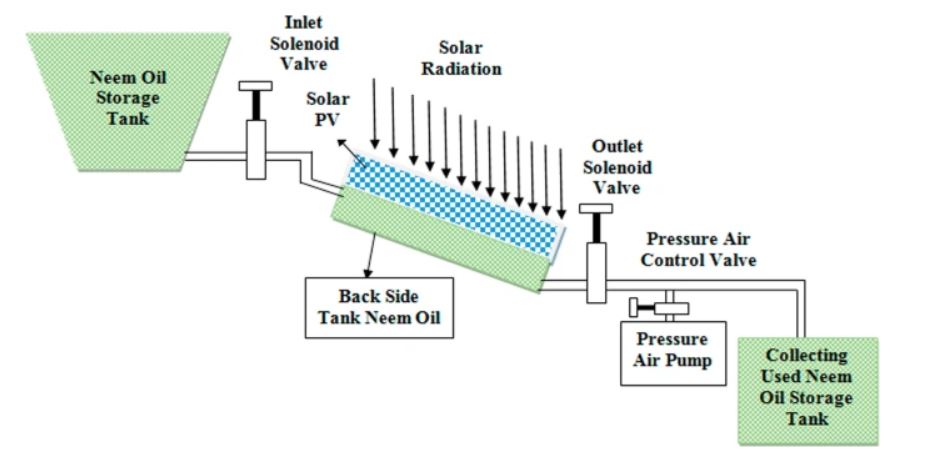An international research team has placed a tank of neem oil at the back of the solar modules for cooling. The proposed solution improves the efficiency of photovoltaic panels up to 17.8%.
A team of scientists led by Kongu College of Engineering in India studied the use of waste neem oil as a cooling solution for photovoltaic modules.
Neem oil extracted from the seeds of neem tree is used as a medicine for some skin diseases.
The researchers explained that the oil acts as a phase change material (PCM), which can absorb, store and release large amounts of latent heat over limited temperature ranges. PCMs are often used in research for photovoltaic module cooling and thermal storage.
“Neem oil has a good thermal range, its density is physically high, it is chemically stable and non-corrosive, it does not pollute the environment, it is reusable and recyclable, and it is economically cheap and easy to dispose of,” they concluded. “In general, any PCM used for cooling should have low thermal conductivity, stability and cyclability. “Neem oil meets all limitations.”
For their experimental setup, the academics used 50 W monocrystalline and polycrystalline modules with an area of 43.18 cm × 35.56 cm. At the rear, a 4.064 cm deep oil tank was filled with 83.33% used oil. The rest of the back surface was kept as “breathing space”.
Oil was changed every 30 minutes and cost 15 rupees ($0.18) per day for monocrystalline and polycrystalline configurations. To make room for the replaced oil, the residual oil that had already been used for cooling was dumped into a tank. A valve controls the tank, so, after use, “it's very easy to dispose of neem oil,” the team insists.
The systems were tested outdoors on an April day and compared to control systems without neem oil cooling. At peak irradiance, the monocrystalline module delivered 39.9 W, while the polycrystalline module produced 41.6 W.
Regarding the monocrystalline and polycrystalline cooling systems with neem oil, their temperatures were reduced by 2.29% and 4.34%, respectively, while their efficiencies were increased by 15.0% and 17.8%, respectively.
The scientists compared these results with those obtained with other oils used for cooling purposes in previous publications and found that neem oil achieved the best performance in cooling solar panels to date. “Coconut oil 9.0% and 10.40%, sesame oil 8.90% and 13.90%, and peanut oil 14.0% and 16.80%,” they noted.
After compiling these results, the scientific team compared the use of other cooking oils as photovoltaic refrigerants with previous literature.
Compared to the temperatures of monocrystalline and polycrystalline of cooking oils, the temperatures of monocrystalline and polycrystalline systems with neem oil cooling are reduced by 2.29% and 4.34%, respectively: coconut oil by 3.76% and 4.09% and sesame oil by 4.29%, and peanut oil by 2.25%, respectively. and is 4.30%.
The results are presented in the study “A new method for improving solar photovoltaic unit efficiency using neem oil as cooling medium for high power applications – an experimental study” (A New Method for Improving Solar Photovoltaic Unit Efficiency Using Neem Oil as Cooling Medium for High Power Applications: An Experimental Study), Publ. Electrical Engineering.
The research team includes scientists from Coimbatore Institute of Technology, Ramakrishna Institute of Technology and Theni Kammavar Sangam College of Technology and Qatar University.
This content is protected by copyright and may not be reused. If you would like to collaborate with us and reuse some of our content, please contact: [email protected].

